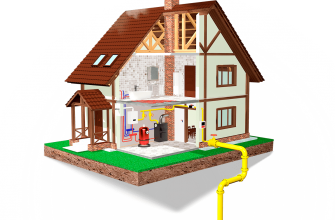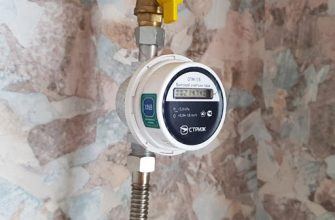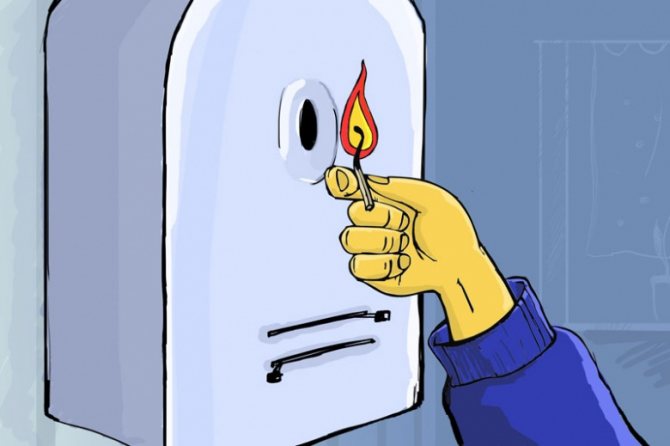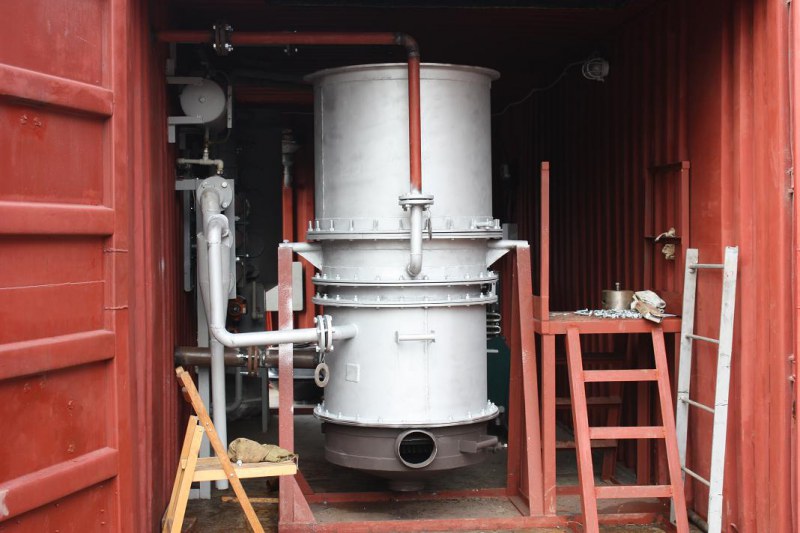The most common method of gas supply is the supply of natural gas through a centralized gas pipeline. Autonomous gasification presupposes storage of a certain amount of natural gas in a reservoir. At the same time, the user does not depend on the mode and quality of gas communications, however, he is forced to periodically replenish his fuel reserves.
What is autonomous gasification
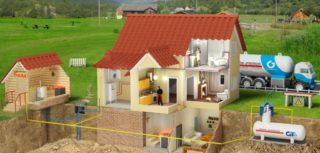
There are 2 storage options: cylinders and gas tanks. The first method is only suitable for cooking in the country. An extensive tank provides fuel for the stove and oven, heating boiler, heaters, heating boiler.
Contained in the gasholder is not natural gas. Methane is very difficult to store: the gas liquefies at a temperature of -160 C under a pressure of at least 200 bar. Providing such conditions in a tank intended for domestic needs is extremely difficult and expensive. Therefore, instead of methane, a propane-butane mixture is pumped into the gasholder.
The gas mixture is stored in a gasholder in a liquefied form. The mixture is fed into the outer pipes in a gaseous state, since it easily evaporates when the pressure in the reducer drops. Through internal pipes, gas is supplied to the kitchen stove, boiler, boiler. Fuel can also be used to generate electricity if a gas generator is installed.
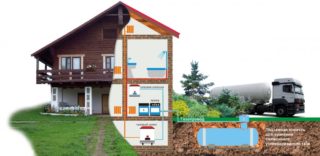
There are a lot of advantages of autonomous gas supply to a private house:
- safety - leakage or fire is practically excluded;
- low price of the mixture;
- ease of use.
There is one important feature. In the cold, condensation forms inside the tank, which greatly interferes with the supply of fuel. To avoid this, gas tanks are placed underground in Russia. The depth of the trench for the container depends on the weather conditions. The gas tank should be located at a depth where the temperature never drops below 0 C. This makes it very difficult to install the device, especially in northern latitudes.
Propane-butane gas burns with the release of 28.4 kW / m3. while the combustion of the same amount of methane releases only 9.4 kW.
Elements of an autonomous gasification system
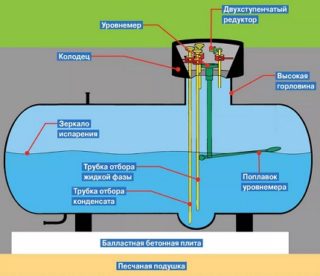
The gasification system of any country house should include the following elements:
- The gas holder is a sealed tank made of high durable steel. This is where the propane-butane mixture is stored under pressure. The deeper it is necessary to install the gas tank, the more durable the structure must be.
- Reinforced concrete slab - the container must be completely stable. The base eliminates the displacement of the tank with any ground movement.
- Cathodic-anodic protection - steel is prone to corrosion. Upon contact with the ground, this quality is enhanced, since the metal accumulates electricity, thereby provoking an electrochemical oxidation reaction. The protective system slows down rusting.
- Butane collector-evaporator - during prolonged cold weather, butane accumulates at the lowest point of the system and shuts off the fuel supply.
- Gas pipelines - external and internal. The underground part can be made of polyethylene. It is laid at a depth below the freezing level under a slope.However, according to the rules, underground gas injection into the building is prohibited. For this, a basement input is equipped - a structure that includes a steel pipe, a crane and a bellows expansion joint. The latter ensures the supply of gas to the house for any movement of the ground.
- Shut-off and control valves are taps, relief valves, safety valves, pressure regulator.
- Measuring equipment - sensors and devices for measuring pressure, temperature, accumulation level.
- Gas equipment - stove, boiler, boiler.
Some models are equipped with a manhole through which a specialist can get inside the tank and inspect it. An additional valve can be installed in the basement module to shut off the gas supply to the house when a leak is detected.
Various types of gas tanks
There are several types of gas tanks. For autonomous gasification of any private house, category 1 tanks are used, designed to store the gas mixture under a pressure of 3–6 bar. Category 2 models operate at 30 atm. and are used in enterprises.
Gas tanks are classified according to a number of characteristics.
Depending on the location

According to the installation method, a distinction is made between surface and underground storage.
Ground models are placed above the ground on a concrete base. Earthwork is minimal, so installation is inexpensive. Tank inspection is also straightforward. However, such a solution is only suitable for regions with a warm climate, since moisture condensation occurs already at 0 ° C, which shuts off the gas supply. In other areas, the structure needs to be insulated, which is much more expensive.
Another significant difficulty is size. It is very difficult to install such a large object in a small summer cottage. We'll have to sacrifice a part of the garden and the yard, and very few people are satisfied with this.
Underground installation is more difficult and more expensive: you need to dig a trench, the deeper the colder the winter in the region, fill the slab, place a gas tank and pipes. But in all other respects, this option is more profitable. The area of the site remains free, thermal insulation is not needed, the gas does not escape into the air, but enters the soil, which excludes an explosion or fire.
By design
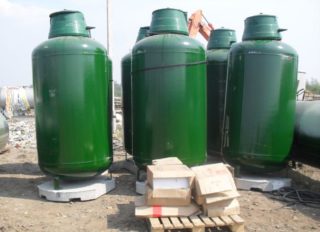
There are gas tanks with variable and constant volume. The former are used in an industrial setting. Here the gas pressure is maintained by a mechanism that separates the working and the vacated volume of the reservoir. Gasification of the house is carried out by installing gas tanks with a constant volume.
Constant volume constructions are divided into 2 types:
- Horizontal - the capacity of the gasholder depends on the surface of the liquefied phase. The larger it is, the larger the volume of the vapor phase. In horizontal tanks, the mirror of the liquefied phase is larger, therefore, such models are more efficient.
- Vertical - the surface of the mirror is smaller, which means that the gas evaporates more slowly. However, the vertical design takes up less space.
If they live permanently in a gasified private house, horizontal tanks are installed.
Neck height
For the gas tank to work efficiently, the fittings must be located almost at ground level. This also solves another problem: the danger of flooding in high groundwater.
Models with a low neck are installed in the southern region, where there is no need to lower the tank below the freezing level of the earth. In middle and northern latitudes, the gasholder is mounted at a depth of 1.5 m or deeper. In such cases, a tank with a high neck is needed.
Extending the reinforcement casing does not solve the problem. Sealing creates a danger of explosion, since in this case propane-butane does not absorb into the soil when leaking, but goes into the air.
Installation and maintenance
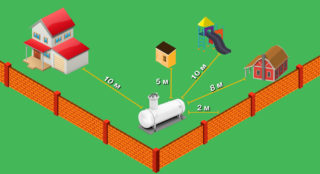
The autonomous gas scheme at the summer cottage is the result of the work of several specialists.Inside the building, the placement of gas appliances and a gas pipeline is designed by an architect. The external pipeline and the location of the gas tank are planned by a representative of the gas company. It is necessary to assess the relief of the site, analyze the building plan and only then find a place for the gas tank.
The project of a gas station for a private house needs to be approved. Only after that construction begins.
- The gas tank must be at a distance of at least 1 m from a residential building, at least 5 m from the garage, at least 10 m from a well or pool, at least 2 m from the fence. A pit is dug at the selected site, at least 1.5 m deep. The customer can do this himself.
- At the bottom of the pit, a reinforced concrete slab is laid on a cushion of rubble and sand.
- A gas holder is installed on the base. Then they equip grounding, mount pressure regulators, an evaporator and other equipment. At the same stage, a condensate trap is installed.
- Dig a trench and lay pipes to the basement input.
- The system is checked for leaks. For this, air is pumped in for a day. If there is no leakage, the trench is covered with sand and then earth.
- They equip the basement input and mount the internal gas pipeline.
- At the last stage, gas appliances are connected, gas sensors and measuring instruments are installed.
- Commissioning is carried out before the installation and start-up of the gas meter. After completion, the counter is sealed.
Despite the large amount of work, the autonomous gas supply is equipped in 1–2 days. From the moment of the first inspection of the site to the start-up of the system, on average, it takes up to 7 days.
Design and execution of documentation
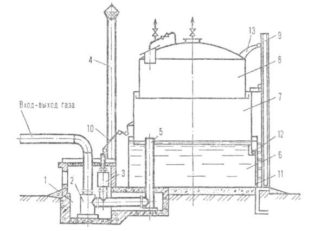
Any gas supply system must be registered with the gas administration. Reliability and safety are the main requirements for gasification. The proof is the design documentation:
- site plan, where all buildings and laid communications are marked;
- technical characteristics and passports of all system elements: from a gas holder to a gas meter;
- gas pipeline diagram - external and internal;
- building plan indicating the location of all gas appliances.
You will also need papers certifying the rights of the applicant: a passport, a document confirming the ownership of the site, and so on.
Based on the documents, they develop a project for the construction of an individual gas storage and make calculations. The project must be approved by the Ministry of Emergency Situations and environmentalists.
Then the proposal is submitted for approval to the city gas industry.
System and gas device cost
The cost of an autonomous gasification consists of 2 components: the cost of equipment and design and installation work. It is defined:
- the area of the building to be gasified;
- the length of communications;
- the type and capacity of the gasholder;
- the presence and nature of additional equipment;
- the complexity of the project;
- location of the facility - on average, gasification of houses within the city is cheaper.
Autonomous gas - propane-butane mixture. Its price is higher than methane - 17-18 rubles. for 1 liter. The cost of the mixture depends on the butane content. Winter gas is more expensive - it only contains 10–30% butane. In the summer, the share is 40-50%. Butane evaporates much worse at low temperatures.
Advantages and disadvantages of autonomous gasification
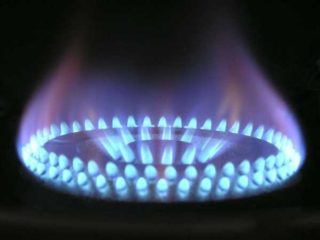
An autonomous system provides many benefits:
- The operation of gas appliances in the house does not depend on accidents on the line or pressure changes. The gasholder supplies fuel under constant pressure.
- Gas for home - propane-butane mixture burns with the release of a large amount of heat .;
- The gas tank is safer. If a leak occurs, the gas is absorbed into the ground rather than released into the air.
- The autonomous system is very easy to maintain.
- Gas equipment lasts longer. The propane-butane mixture does not contain sulfur compounds, and upon contact with them, the metal is destroyed faster.
Minuses:
- the initial arrangement is more expensive than laying a gas pipeline from the main;
- you should independently monitor the fuel level in order to replenish stocks on time;
- during the operation of the gasholder, condensate may precipitate, which disrupts the gas supply. This indicator needs to be monitored.
Maintenance and inspection of the gas tank and the pipeline must be carried out by employees of the gas service. Repair and inspection costs are borne by the owner of the home.

